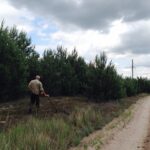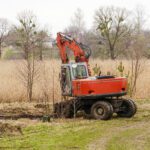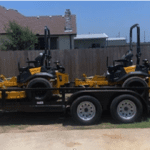Marshlands are some of the most biologically rich and ecologically vital ecosystems on the planet. Acting as natural water filters, flood regulators, and wildlife sanctuaries, these environments play a critical role in maintaining ecological balance. Yet, despite their importance, marshlands are under constant threat from invasive vegetation, unmanaged overgrowth, and human interference. That’s where strategic vegetation control becomes essential.
Why Marsh Vegetation Needs Industrial Management
Unlike other types of landscapes, marshlands host a delicate balance of flora and fauna. But when native vegetation is overtaken by fast-spreading invasive species, the balance quickly tips. Invasive plants like phragmites, cattails, or giant reed can rapidly dominate wetland areas, choking out native plants and altering water flow. These dense stands often form monocultures that reduce biodiversity, making it harder for birds, amphibians, and aquatic life to survive and thrive.
Unchecked growth can also disrupt hydrology. As thick vegetation builds up, it impedes water circulation, leading to increased stagnation, sediment buildup, and even higher flood risk in surrounding areas. What’s meant to be a resilient buffer between land and water can quickly become a clogged and degraded ecosystem.
The Unique Challenge of Marshland Terrain
Managing and removing vegetation in wetlands isn’t as simple as running a mower through an open field. Marshy ground conditions, uneven topography, and waterlogged soils make conventional mowing equipment impractical, often causing more harm than good. That’s why specialized machinery and experienced operators are essential.
Strategic marshland mowing uses low-impact equipment designed to glide across soft terrain without sinking, compacting the soil, or disturbing fragile root systems. This equipment allows professionals to access dense, often unreachable sections of a marsh while maintaining the integrity of the ecosystem. The goal is not just to remove overgrowth, but to do it without leaving a footprint.
A Targeted Approach to Vegetation Clearance
In marshland settings, vegetation clearance must be intentional and data-driven. Random clearing or aggressive removal can damage habitat, erode banks, or harm non-target species. Strategic mowing focuses on targeted removal, cutting back invasive growth while preserving native vegetation that supports the health of the marsh.
This approach often involves seasonal timing. Mowing in late summer or early fall, for example, reduces seed spread from invasives and allows native plants to re-establish in the absence of competition. In some cases, mowing is paired with selective herbicide treatments or replanting efforts to encourage long-term ecological resilience.
What sets strategic vegetation control apart is its focus on restoration, not just removal. It’s about enhancing the natural function of wetlands, supporting clean water, stable shorelines, and robust plant and animal communities.
Environmental and Public Safety Benefits
The benefits of proper marshland industrial vegetation management extend far beyond the marsh itself. Well-maintained wetlands act as natural flood barriers, absorbing heavy rainfall and runoff. They filter out pollutants before they reach rivers and lakes, improving overall water quality. And by controlling overgrowth, these areas are less likely to become fire hazards, especially in drier seasons when tall, unmanaged plants can become fuel.
From a public safety perspective, vegetation control in marshes can also aid in mosquito management. Dense, stagnant vegetation can become a breeding ground for mosquitoes and other pests. Keeping these areas open and aerated helps reduce the risk of vector-borne diseases.
Contact Our Vegetation Control Company for a Tailored Plan!
Overgrown marshland? Let’s bring it back to life. With advanced equipment and proven techniques, A&G Weed Control handles the toughest terrain. Contact us for a tailored vegetation control plan.






0 Comments